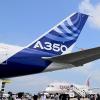Sign in to follow this
Followers
0

2014 Q1 Financial Results for Malaysia Airlines & Air Asia Group
By
flee, in General Aviation

By
flee, in General Aviation